#la scala milan
Explore tagged Tumblr posts
Text
youtube
Today’s watch:
Carla Fracci, Dance in the heart. Carla Fracci, La danza nel cuore.
#ballet#elegantballetalk#elegantballettalk#la scala#Italian ballet#prima ballerina#prima ballerina assoluta#romantic ballet#la scala theatre#la scala Milan#Carolina Fracci#Carla Fracci#la danza nel cuore#Youtube
4 notes
·
View notes
Text
Milan - city of fashion, music and art, even in the rain.
In December 2019, I spent a week in Milan. It was raining, no surprise there for this part of Italy during December. It was wet but achingly beautiful. As a fashion-shopping mecca internationally, not even the rain could dampen its elegance and style – especially as the rain appeared to be here just to highlight the city’s beautiful Christmas illuminations. Galleria Vittorio Emmanuelle II (built…

View On WordPress
#Biblioteca Trivulziana#Brera Are Gallery#Caravaggio#Castello Sforzesco#Christmas in Milan#Davide Livermore#Francesco Meli#Francesco Sforza#Galleria Vittorio Emanuele II#Italian holidays#Italy#La Scala Milan#Leonardo da Vinci#Luca Salsi#Milan#Milan Cathedral#Milan Fashion#Museo del Novecento Milan#Novecento art gallery#Picasso#Puccini#Raphael#Riccardo Chailly#Ristorante Vista Duomo Milan#Saioa Hernandez#Sforza&039;s Castle#The Last Supper by Leonardo da Vinci#Tosca
2 notes
·
View notes
Text
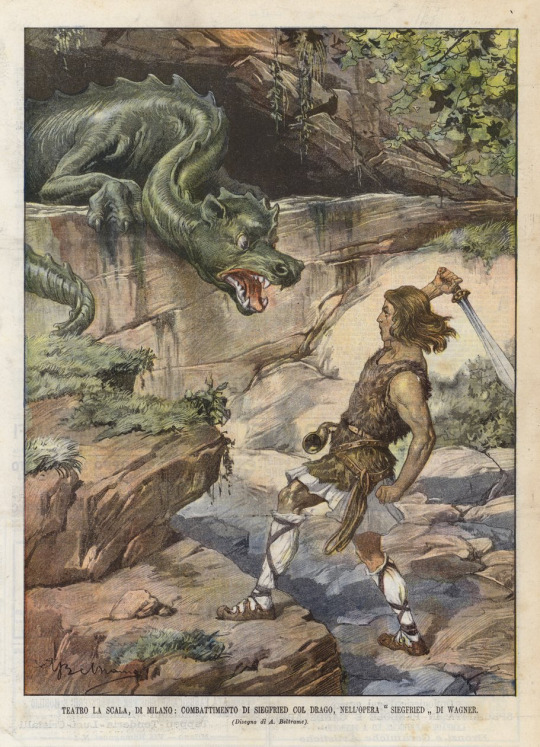
Siegfried Fighting with the Dragon by Achille Beltrame
#siegfried#dragon#art#achille beltrame#fafnir#fafner#dragons#richard wagner#milan#theatre#la scala#opera#der ring des nibelungen#the ring of the nibelung#german#germany#germanic heroic legend#norse mythology#germanic mythology#nibelungenlied#fáfnir#europe#european#mythical creatures#sword#gram#nothung#balmung#völsunga saga#sigurd
141 notes
·
View notes
Text


Princess Grace and Prince Rainier of Monaco walking through the streets of Milan, Italy, on December 6, 1960. The princely couple were in the town to attend the La Scala theatre season opening with Maria Callas the day after.
11 notes
·
View notes
Text
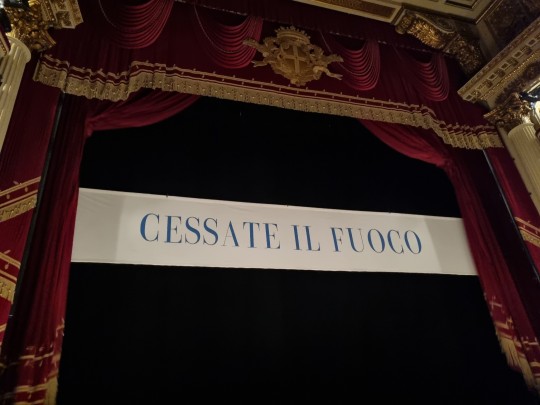

La Scala asking for a ceasefire at tonight's performance of Madina
14 notes
·
View notes
Text
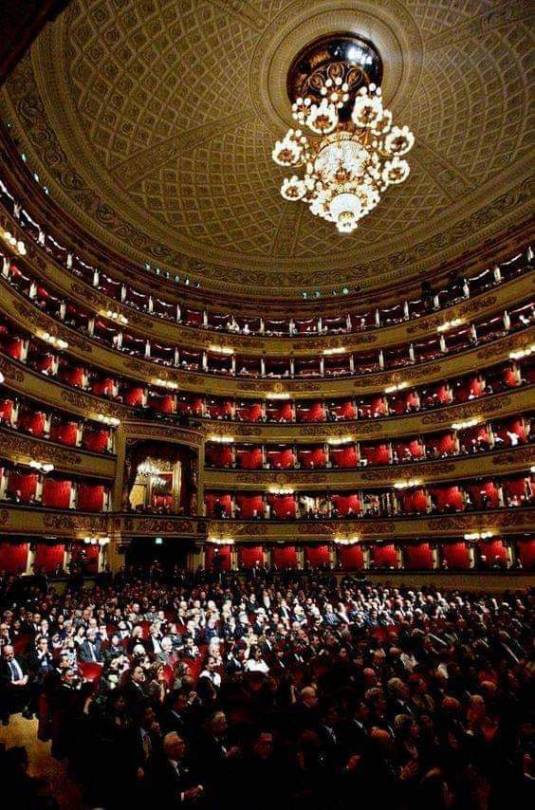
La Scala Opera House - Milan, ITALY
103 notes
·
View notes
Note
My ballet teacher really dislikes Eleonora Abbagnato, do you have any opinions on her?
I’m not really into the Italian dancers that much, but I will say that they aren’t as captivating and beautiful as the Russian dancers.
2 notes
·
View notes
Text
Aureliano Pertile (1885-1952) was a celebrated Italian tenor who enjoyed a 35 year career in major theaters on both sides of the Atlantic. The son of a poor shoemaker and his wife, Pertile was born in Montagnana…just a few blocks away and 18 days after the birth of fellow tenor Giovanni Martinelli. His vocal talents were apparent from a very early age. In 1894, Pertile began singing alto with the choir of the Cathedral of Santa Maria Assunta. At his parents’ insistence, he apprenticed as a goldsmith during his teens, but continued singing. At age 20, he was heard by composer Vittorio Orefice, who invited the young man to study with him in Padua. After five years of work, Pertile made his debut as Lionel in Martha at Vicenza’s Teatro Eretenio on February 16, 1911. In May, he sang the role of Vinicius in the Italian premiere of Jean Nouguès’ Quo Vadis? at Milan’s Teatro dal Verme. Reviews were stellar and the tenor’s career took off quickly. Over the next two years, Pertile made appearances in Brescia, Torino, Asti, Padua and Genoa, with his international debut occurring in Santiago as des Grieux in Manon Lescaut during the fall of 1913. While in South America, the tenor also sang in Buenos Aires and Valparaiso in such works as Un Ballo in Maschera, Mefistofele, Tosca, and La Traviata. Late in 1913, Pertile returned to Italy, where he spent the next few years appearing in Naples, Palermo, Florence, Bologna, and Rome. His La Scala debut occurred on February 22, 1916 as Paolo in Francesca da Rimini, leading to a lengthy association with the company.
By 1921, Pertile had appeared at most of the major theaters of Italy, Spain and South America. Following his Mexico City debut as Faust in Mefistofele in August, Pertile began his only season at New York’s Metropolitan as Cavaradossi in Tosca on December 1. Henderson of the New York Sun reported, “His voice has a tendency toward whiteness, but in its fullest volume it is warmer and resonant. His acting was that of the everyday tenor.” …not exactly the definition of a glowing review. In addition to Cavaradossi, he also sang des Grieux in Manon Lescaut, Grigori in Boris Godunov, Turiddu in Cavalleria Rusticana, Canio in Pagliacci, Radames in Aïda, and Julien in Louise. Sadly, the New York public never quite warmed up to Pertile. After only 13 performances of the aforementioned roles, as well as a pair of Sunday Night Concerts, Pertile was finished in the U.S. His Met career had lasted exactly seven weeks.
Pertile fared much better in his homeland. Arturo Toscanini, who had recently taken the reins at La Scala, invited the tenor to join him for a production of Mefistofele in March. This began a decade long alliance between the two, a highlight of which was Pertile’s creation of the title role of Boito’s Nerone at its premiere on May 1, 1924. Other world premieres entrusted to Pertile during his La Scala tenure were Wolf Ferrari’s Sly in 1927 (under Ettore Panizza) and Mascagni’s Nerone in 1935 (under the composer). The tenor was a superstar at La Scala, with “Pertile Nights” marketed to an adoring public. After Toscanini’s departure in 1929, however, Pertile’s importance in Milan began to diminish. Although the tenor would remain at La Scala until the early 1940s, he was no longer the central figure he had been during the 1920s.
#classical music#opera#music history#bel canto#composer#classical composer#aria#classical studies#maestro#chest voice#Aureliano Pertile#Pertile#lyric tenor#tenor#La Scala#Royal Opera House#Covent Garden#Milan Conservatory#Metropolitan Opera#Met#Nessun dorma#Giacomo Puccini#Puccini#Turandot#classical musician#classical musicians#classical voice#classical history#history of music#historian of music
7 notes
·
View notes
Text
When John William Polidori visited Switzerland in 1816, he wrote in his diary:
“It is a classic ground we go over. Buonaparte, Joseph, Bonnet, Necker, Staël, Voltaire, Rousseau, all have their villas (except Rousseau). Genthoud, Ferney, Coppet are close to the road.”
#I’m forever tracing Napoleon in Switzerland ❤️#source:#From Coppet to Milan: Romantic Circles at La Scala#Carmen Casaliggi#Napoleonic#John William Polidori#Switzerland#Napoleon#The Vampyre#Vampyre#polidori
2 notes
·
View notes
Text
24H à Milan, en Italie
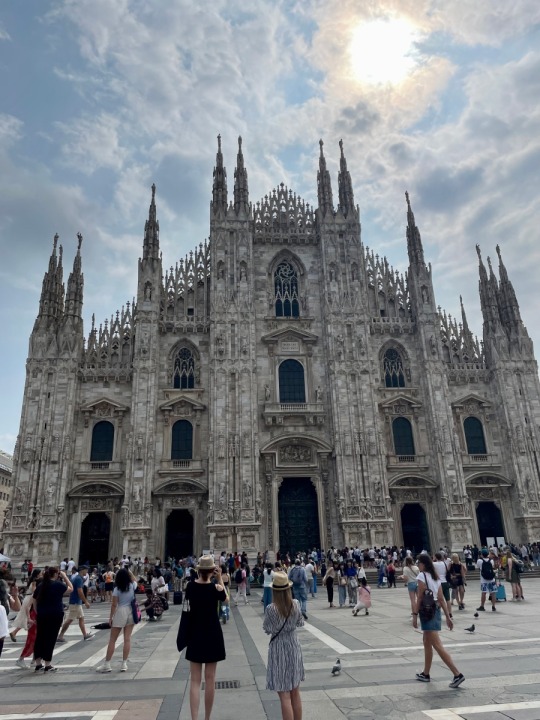
View On WordPress
#Castello Sforzesco#Cathédrale de Milan#Cuisine milanaise#Culture italienne#Découvrir Milan#Duomo#Galerie Vittorio Emanuele II#Italie#Itinéraire Milan#La Cène de Léonard de Vinci#Milan#Milan en une journée#Milan la culture#Milan la mode#Teatro alla Scala#Tourisme à Milan#Visite touristique#Voyage de 24 heures
0 notes
Text

Today in Hippo Tales - A Hippo Sings Opera at the La Scala theater in Milan Italy - https://www.amazon.com/kindle-vella/episode/B0BVP6CM6R
1 note
·
View note
Text
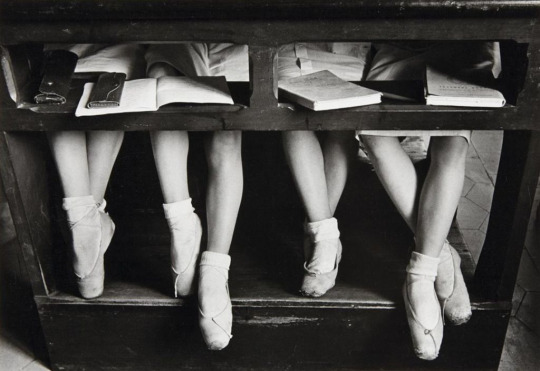
La Scala’s Ballet School, Milan, Italy, Photo by Alfred Eisenstaedt, 1934
292 notes
·
View notes
Text

Umberto Brunelleschi, Woman in Sheer Dress with Bird of Paradise, 1920's
Umberto Brunelleschi (1879 - 1949) was born in Italy, but moved to France in 1900, where he became a printer, book illustrator, and set and costume designer. He contributed to several French fashion magazines, such as Journal des Dames et des Modes, Gazette du Bon Ton, and Les Feuilles d'Art. Between the two world wars he worked on set and costume designs for several theaters, including Folies Bergère in Paris, the Roxy Theatre in New York, and La Scala in Milan. Some of the books he illustrated are Candide (Voltaire), Contes du temps jadis (Charles Perrault), and Les Masques et les Personnages de la Comedie Italienne. Towards the end of his life he also did a number of erotica illustrations. (x)
#Umberto Brunelleschi#art deco#illustration#1920s#bird of papradise#sheer dress#book illustration#vintage#1920s illustrations#art#brunelleschi#fashion illustration#painting#risque#birds-of-paradise#art deco design#art deco illustration
297 notes
·
View notes
Text



The Prince and Princess of Monaco arrive at Milan’s La Scala Theatre to attend the premiere of Renzo Rossellini’s “Legend of the Return” on March 1sst, 1966.
6 notes
·
View notes
Text
Prompt: Theatre (August 29) and Italy (August 30) from @into-the-jeggyverse
Word count: 435 words
Pairing: Jegulus (modern AU - genderfluid Regulus)
⚠️ Warnings: none
James was still in shock. He couldn't understand how Regulus managed to get tickets in the first rows at La Scala, the most beautiful theater in the world. Not only that, but it was also the most acclaimed show of the year. James bought himself a new tuxedo just for this occasion.
When they started dating, James revealed to Regulus that one of his biggest wishes was to go to Italy to see a show at La Scala. Regulus' great wish was a little simpler: to see Michelangelo's "David" in Florence. After four years together, the two simultaneously came up with the idea of fulfilling the other's wish. It had been a mutual surprise for their four year anniversary. James bought the tickets for Italy, Regulus secured invitations to La Scala. First they were going to see the show in Milan, and tomorrow morning they were going to leave for Florence.
James was arranging his bow tie in front of the mirror when he heard the bedroom door open, followed by a subtle and pleasant sound of heels. He turned his head and smiled when Regulus appeared in the hall, wearing a black dress with long sleeves, a wide skirt and gloves, similar to Dior dresses from the 50's. They also had a pair of green heels, matching with the necklace around their neck and their red lips.
"How do I look?" Regulus asked, and with audible emotions in their tone.
Ever since Regulus had discovered the complexity surrounding the idea of gender, they tried to find a way to express themselves in their complete truth. It was a long way to go, especially because of the way they were raised. Every time they felt the need to express their feminine side, Walburga's voice echoed in their head. Beside hers, however, there is another voice, a warmer one that supports and accepts.
"You're gorgeous, Regulus" James said and approached his partner to give them a kiss. "This dress fits you so well, I was right when I told you that you should buy it".
Regulus smiled and went to get their coat so they could leave. James looked at them from behind with eyes full of love. He couldn't wait to leave for Florence tomorrow. He had the ring ready for a year, and the plan was absolutely perfect. James would ask Regulus to marry him with "David" as a witness, after which they would watch the whole city from Piazzale de Michelangelo. Both were possessed by a type of magic that only a country like Italy could awaken in someone.
#microfics#dailyprompt#marauders era#james potter#james x regulus#jeggyverse microfic#regulus black#jegulus#jegulus microfic#dead gay wizards
79 notes
·
View notes
Photo
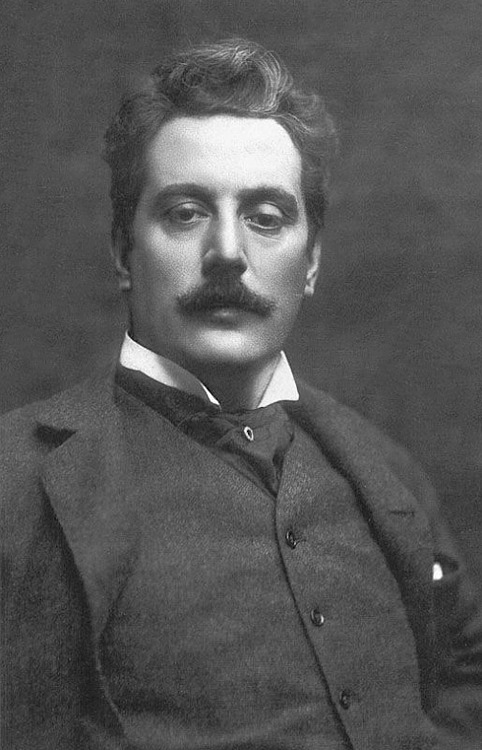
Giacomo Puccini
Giacomo Puccini (1858-1924) was an Italian composer best known for his operas La Bohème, Tosca, Madama Butterfly, and Turandot. Puccini drew inspiration from a wide range of literary sources, and his late Romantic music with its immortal melodies emphasised the strong characters, drama, and fast pace of his emotional operas, which remain today as popular as ever.
Early Life
Giacomo Puccini was born in Lucca in the Italian region of Tuscany on 22 December 1858. He came from a long line of musicians who had held the position of organist at Lucca's San Martino Cathedral since the previous century. Giacomo's father Michele (1813-1864), was both the cathedral's organist and choirmaster, and he was the director of the local music school, the Istituto Pacini; he died when Giacomo was just six years old. Unfortunately for tradition, Giacomo, although interested in music, would take an entirely different career path from his forefathers.
Giacomo, the fifth of eight children, was raised by his mother, Albina, who ensured he learnt to play the organ and sing. Giacomo sang in the cathedral choir from age ten. He attended the Istituto Pacini and graduated in 1880, his final exam piece being his Messa di Gloria. Thanks to financial help from a cousin and a successful application for a grant, Giacomo moved on to the Conservatory in Milan. Aiming far higher than the position of organist in Lucca, Giacomo's fate had been sealed back in 1876 when he heard a performance in Pisa of Aida by Giuseppe Verdi (1813-1901). The magic of Verdi's tragic opera set in ancient Egypt convinced Puccini that he too should earn a living writing operas.
The young composer's graduation piece at the Conservatory was Capriccio Sinfonico, a promising orchestral piece, but it was Le villi (The Fairies), a one-act opera, that would open doors for Puccini. The work was staged at the Teatro dal Verme in Milan in 1883. Puccini's professional career took off in 1884 when he performed music from his opera at a private party and it happened to be heard by Giulio Ricordi, the famed publisher who had Verdi on his books. Ricordi added Puccini to his publishing stable and commissioned him to write another opera. The result was Edgar, which premiered at Milan's La Scala theatre in 1889. The La Scala audience has always been a testing one to win over, and unlike his first, Puccini's second opera fell flat. The composer himself considered the work a "mistake" (Thompson, 174).
Puccini was on safer ground with his third opera, Manon Lescaut, a tried and tested libretto that had been used for Jules Massenet's opera Manon (1884), which was itself based on the 1731 novel L'histoire du chevalier des Grieux et de Manon Lescaut by Abbé Prévost. Puccini also tried a new city for his premiere: Turin on 1 February 1893. Manon Lescaut was a raging success – the composer was obliged to take 30 curtain calls – with further productions in London and Philadelphia in 1894. The composer's career was finally launched. The story of Manon Lescaut, told in four acts, has Des Grieux fall in love with Manon, and they elope to escape the clutches of the elderly Géronte. Nevertheless, Manon is attracted by the life of luxury she could lead with Géronte and chooses him over Des Grieux. Géronte is suspicious that Manon has rekindled her affair with his rival, arrests her, and so she will be deported. Des Grieux boards the ship taking away Manon, and they are reunited only for Manon to die in his arms. Audiences loved it. The story of a tragic soprano heroine who dies in a singing finale would be used time and again by Puccini.
Continue reading...
17 notes
·
View notes